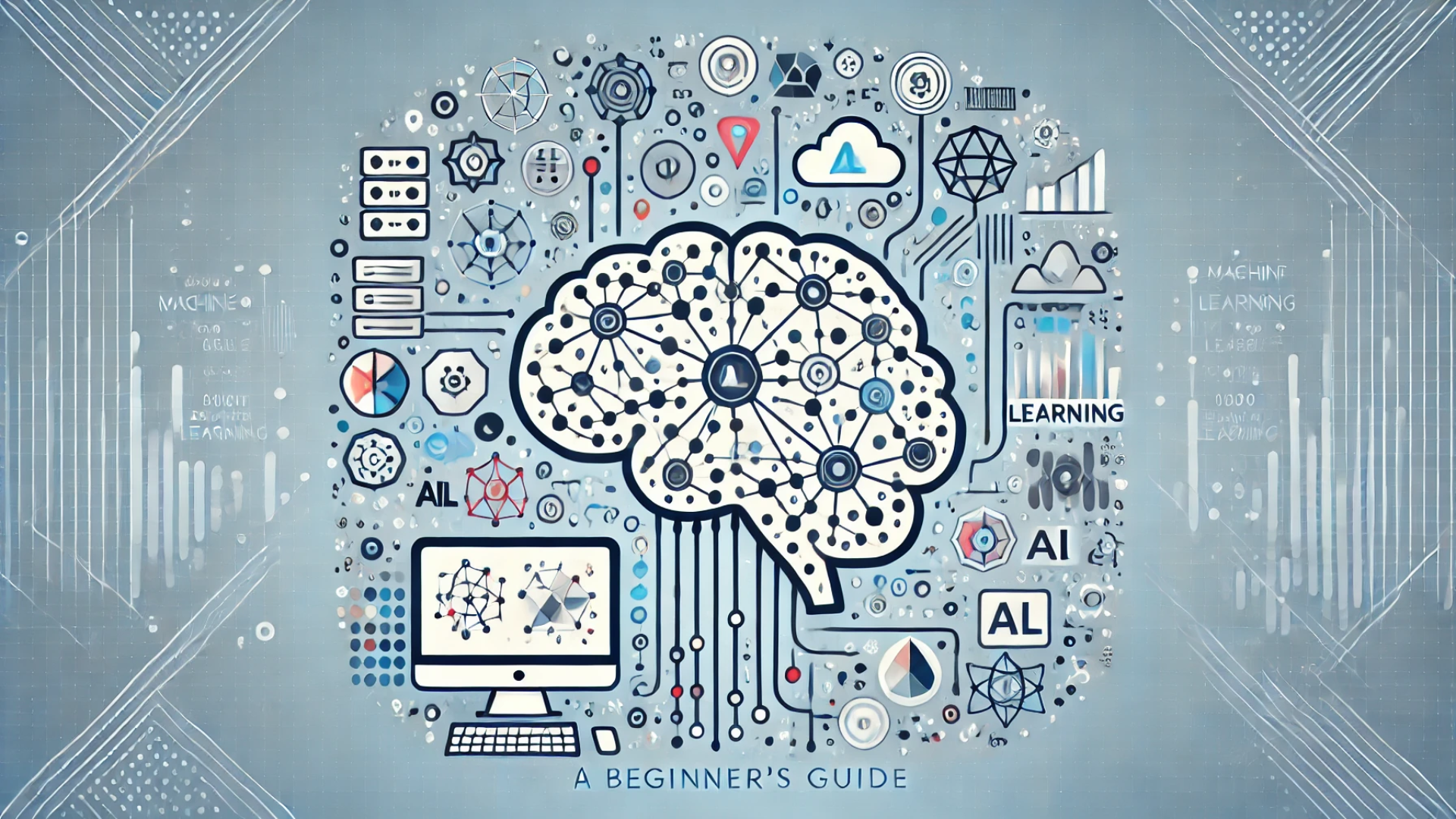
Machine Learning (ML) is one of those buzzwords that you’ve probably heard a lot lately. But what exactly is it? In simple terms, ML is a type of artificial intelligence (AI) that allows computers to learn and make decisions without being explicitly programmed. It’s like teaching a computer to think and learn from experience, much like humans do.
In this guide, we’ll break down what ML is, how it works, the different types, and some cool real-world examples of how it’s being used. Whether you’re a tech newbie or just curious, this article will help you understand ML in a way that’s easy to digest.
What is Machine Learning?
Machine Learning is a branch of AI that focuses on building systems that can learn from data, identify patterns, and make decisions with minimal human intervention. Imagine teaching a child how to recognize a cat. You’d show them a bunch of pictures of cats, and over time, they learn to spot one on their own. That’s essentially what ML does—teaching computers to recognize patterns from vast amounts of data.
How Does Machine Learning Work?
ML works by feeding data into algorithms, which are like step-by-step instructions for solving problems. These algorithms analyze the data, learn from it, and then use this knowledge to make predictions or decisions.
Here’s a simplified version of how it works:
- Data Collection: The process starts by gathering a large amount of data. This could be anything from images, text, numbers, or even clicks on a website.
- Data Preparation: The collected data is then cleaned and organized to make it suitable for analysis. Think of it as tidying up before diving into work.
- Model Selection: Next, an algorithm or model is chosen to analyze the data. Different models are used for different types of problems (more on this later).
- Training: The chosen model is trained on the prepared data. This step involves feeding the model data and allowing it to learn patterns.
- Testing: Once the model is trained, it’s tested on a new set of data to see how well it performs.
- Deployment: If the model performs well, it’s deployed in real-world applications where it can make decisions or predictions.
- Continuous Learning: The model continues to learn and improve over time as it’s exposed to more data.
Types of Machine Learning
ML can be categorized into three main types: Supervised Learning, Unsupervised Learning, and Reinforcement Learning.
Supervised Learning:
- Definition: In this type, the model is trained on labeled data, meaning each piece of data is tagged with the correct answer.
- Example: Suppose you want to teach a model to recognize apples and oranges. You would provide it with a bunch of labeled images—some tagged “apple” and others tagged “orange.” The model learns to identify each fruit based on the labels.
- Use Cases: Spam detection in emails, image classification, and voice recognition.
Unsupervised Learning:
- Definition: Here, the model is given data without labels and must find patterns or relationships on its own.
- Example: Let’s say you feed a model a bunch of fruit images without any labels. The model might group the images into clusters based on similarities, like color or shape, even though it doesn’t know what an apple or orange is.
- Use Cases: Customer segmentation, anomaly detection, and recommendation systems.
Reinforcement Learning:
- Definition: This type involves a system learning to make decisions by taking actions and receiving feedback in the form of rewards or penalties.
- Example: Think of a robot learning to walk. It starts by taking random steps. If it falls, that’s a penalty; if it takes a stable step, that’s a reward. Over time, the robot learns to walk more steadily by maximizing its rewards.
- Use Cases: Robotics, gaming, and autonomous vehicles.
Real-World Applications of Machine Learning
ML is not just a theoretical concept; it’s already shaping the world around us in many exciting ways:
Healthcare:
- Predicting Diseases: ML models can analyze medical records to predict the likelihood of a patient developing certain conditions, such as diabetes or heart disease.
- Personalized Treatment: By studying data from previous patients, ML can help doctors recommend treatments tailored to individual needs.
Finance:
- Fraud Detection: Banks use ML algorithms to detect unusual transactions that could indicate fraud.
- Investment Strategies: ML models can analyze market data to suggest profitable investment opportunities.
Retail:
- Recommendation Systems: Ever wondered how Netflix or Amazon seems to know what you want to watch or buy next? That’s ML at work, analyzing your past behavior to recommend products or shows.
- Inventory Management: Retailers use ML to predict demand for products, helping them manage stock levels more efficiently.
Transportation:
- Autonomous Vehicles: Self-driving cars use ML to recognize objects, navigate roads, and make decisions on the fly.
- Route Optimization: Ride-sharing apps like Uber use ML to suggest the fastest routes and match drivers with passengers.
Customer Service:
- Chatbots: Many companies use ML-powered chatbots to handle customer inquiries, providing quick responses without human intervention.
- Sentiment Analysis: Businesses analyze customer feedback using ML to gauge overall satisfaction and identify areas for improvement.
Challenges and Limitations
While ML is incredibly powerful, it’s not without its challenges:
- Data Quality: ML models are only as good as the data they’re trained on. Poor-quality data can lead to inaccurate predictions.
- Bias: If the data used to train a model is biased, the model’s predictions will be biased too. This is a big concern, especially in sensitive areas like hiring or law enforcement.
- Complexity: Developing and maintaining ML models requires specialized skills, making it challenging for small businesses to implement.
- Privacy Concerns: The use of personal data for ML raises significant privacy issues. There’s an ongoing debate about how to balance innovation with protecting individual privacy.
How to Get Started with Machine Learning
Interested in diving deeper into ML? Here’s how you can start:
- Learn the Basics: Start with online courses or tutorials that cover the fundamentals of ML, such as Coursera, edX, or Khan Academy.
- Practice Coding: Familiarize yourself with programming languages commonly used in ML, such as Python or R. Practice by working on small projects.
- Experiment with ML Libraries: Python libraries like TensorFlow, Keras, and Scikit-learn make it easier to build and test ML models. Experiment with these to gain hands-on experience.
- Join a Community: Engage with others interested in ML by joining forums, attending meetups, or participating in hackathons.
- Stay Updated: ML is a rapidly evolving field, so keep learning and staying updated with the latest trends and advancements.
It’s here Uncovered VBScript you need to know
Wrapping Up
Machine Learning is a game-changer that’s transforming industries and reshaping the future. From healthcare to transportation, its applications are vast and growing every day. While it does have its challenges, the potential benefits of ML are too significant to ignore. Whether you’re looking to start a career in ML or just want to understand what the hype is all about, this beginner’s guide should give you a solid foundation to build on.

